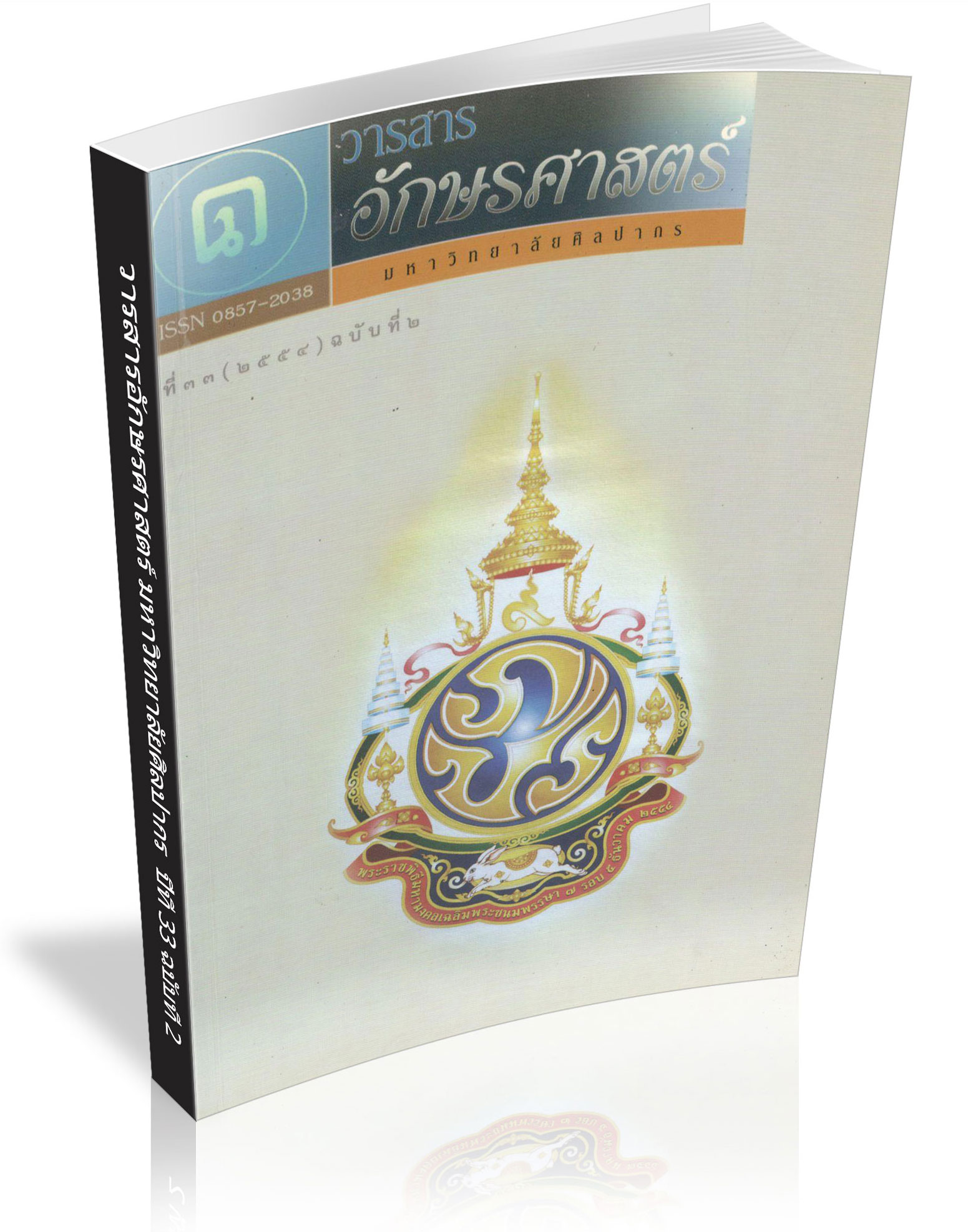ภาพสะท้อนทางสังคมและวัฒนธรรมจากคําเรียกสีในภาษาฝรั่งเศส
Keywords:
French color tersm, French language and culture, ethnolinguisticsAbstract
The categorization of French basic color terms is inconclusive. This preliminary study aims to analyze French basic and non-basic color terms as well as the socio-cultural dimensions reflected from the color terms. The data were collected from two dictionaries of colors. The study revealed that there were 12 French basic color terms. As for the coining of the non-basic color terms, five strategies were found in French : 1) using specific nouns as color terms or their derived forms, 2) compounding two color terms, 3) modifying color terms with modifiers of color terms, 4) modifying color terms with derivational suffixes, and 5) using loanwords as color terms. Moreover, the color terms can reflect French socio-culture and natural surroundings such as the values of eating, the values of dressing, the values of tobacco, the values of heraldry, the commerce with other countries, and the natural environment.
Downloads
References
ธีระพันธ์ ล.ทองคํา. คําเรียกสีในภาษาเย้า (เมี่ยน). กรุงเทพฯ : โรงพิมพ์จุฬาลงกรณ์มหาวิทยาลัย, ๒๕๓๕.
ราชบัณฑิตยสถาน. พจนานุกรมฉบับราชบัณฑิตยสถาน พ.ศ. ๒๕๔๕. กรุงเทพฯ : ราชบัณฑิตยสถาน, ๒๕๔๕.
ศุภมาส เอ่งฉ้วน. “คําเรียกสีและมโนทัศน์เรื่องสีของคนไทยสมัยสุโขทัยและสมัยปัจจุบัน.” วิทยานิพนธ์ปริญญาอักษรศาสตรดุษฎีบัณฑิต สาขาวิชาภาษาศาสตร์ คณะอักษรศาสตร์ จุฬาลงกรณ์มหาวิทยาลัย, ๒๕๔๓.
ภาษาต่างประเทศ
Berlin, B. and Kay, P. Basic color terms : their universality and evolution. Stanford : CSLI Publications, 1999.
Chauvel, A. Petit dictionnaire des couleurs et des matières colorantes. Puteaux : Erec, 2001.
Chroma, Le dictionnaire des noms de couleurs. [online]. Accessed 9 December 2011 Available from http://pourpre.com/chroma/index.php. 2009.
Downloads
Published
How to Cite
Issue
Section
License
ผู้เขียนบทความต้องยินยอมในข้อกำหนดต่าง ๆ ของวารสารก่อนส่งบทความตีพิมพ์




